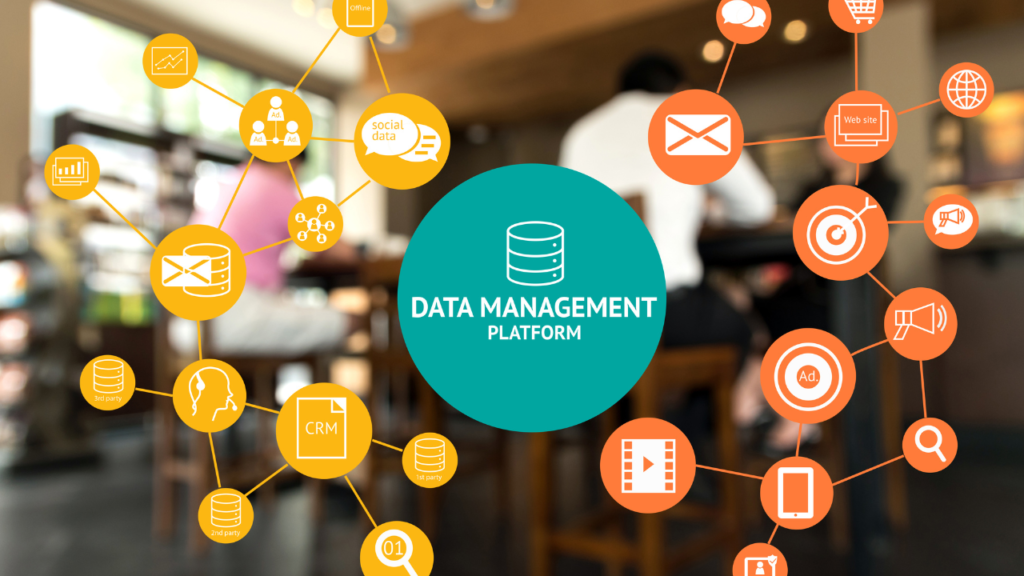Understanding the Importance of AI Agency Automation Workflow
AI Agency Automation Workflow plays a crucial role in enhancing both efficiency and productivity of AI Agencies. By streamlining repetitive tasks, agencies can focus on more strategic initiatives that drive growth and innovation. Automation minimizes human error, ensuring that processes are executed consistently and accurately. This is particularly important in data-intensive environments where precision is paramount. Furthermore, automated workflows can significantly reduce the time spent on mundane tasks, allowing team members to allocate their efforts toward creative problem-solving and client engagement.
Moreover, the integration of automation into daily operations fosters a culture of agility. Agencies can quickly adapt to changing market demands and client needs, as automated systems can be adjusted with relative ease. This flexibility not only improves service delivery but also enhances client satisfaction. With automation, AI agencies can maintain a competitive edge by delivering faster results without compromising quality. In essence, embracing automation is not just about keeping up with technological advancements; it is about positioning the agency for long-term success in an increasingly complex landscape.
Identifying Key Areas for Automation

In the fast-paced world of AI agencies, identifying processes ripe for automation can significantly enhance operational efficiency. Several key areas stand out as prime candidates for automation:
- Data Processing: Automating data collection, cleaning, and analysis can save countless hours. By utilizing algorithms and machine learning models, agencies can process large datasets quickly and accurately, allowing teams to focus on strategic decision-making rather than mundane tasks.
- Client Communication: Streamlining client interactions through automated email responses, chatbots, and CRM systems can improve client satisfaction and engagement. These tools can handle inquiries, schedule meetings, and provide updates, ensuring that clients receive timely information without overwhelming staff.
- Project Management: Automation tools can assist in tracking project progress, assigning tasks, and managing deadlines. By integrating project management software with other systems, agencies can ensure that everyone is on the same page, reducing the risk of miscommunication and missed deadlines.
- Reporting: Generating reports can be a time-consuming task. Automating this process allows agencies to produce real-time insights and analytics, enabling better decision-making and performance tracking.
- Marketing Campaigns: Automating marketing efforts, such as email campaigns and social media postings, can enhance outreach while minimizing manual effort. This ensures that marketing messages are consistent and timely, reaching the target audience effectively.
By focusing on these areas, AI agencies can leverage automation to not only enhance productivity but also improve overall service delivery, allowing teams to concentrate on innovation and growth.
Choosing the Right Automation Tools and Technologies

When it comes to automating workflows in an AI agency, selecting the right tools and technologies is crucial for achieving optimal results. There are numerous options available, each designed to cater to specific needs and processes. AI-specific software often provides tailored solutions that enhance the capabilities of your agency. These tools can streamline tasks such as data analysis, machine learning model deployment, and natural language processing. Examples include platforms like TensorFlow and PyTorch, which are invaluable for developing AI models efficiently.
In addition to AI-specific software, general automation platforms can also play a significant role in enhancing productivity. Tools like Zapier and make (Integromat) allow agencies to connect various applications and automate repetitive tasks without the need for extensive coding knowledge. These platforms enable seamless integration between different software, facilitating smoother workflows.
When choosing automation tools, consider the following factors:
- Scalability: Ensure that the tool can grow with your agency’s needs.
- User-friendliness: Opt for tools that are easy to use and require minimal training.
- Integration capabilities: Look for solutions that can easily integrate with your existing systems.
- Cost-effectiveness: Evaluate the pricing structure to ensure it aligns with your budget.
Ultimately, the right combination of AI-specific software and general automation platforms can significantly enhance your agency’s efficiency, allowing you to focus on delivering high-quality services to your clients. By carefully assessing your needs and exploring the available options, you can create a robust automation strategy that drives success.
Implementing Automated Workflows Effectively
To successfully integrate automation into existing workflows, a structured approach is essential. Start by assessing current processes to identify which tasks are repetitive and time-consuming. This evaluation will help pinpoint areas where automation can yield the most significant benefits. Once you have a clear understanding, select appropriate automation tools that align with your agency’s specific needs. It’s crucial to choose platforms that are user-friendly and compatible with your existing systems.
Next, set up the automation tools by configuring them to handle the identified tasks. This may involve defining workflows, setting triggers, and establishing parameters for data input and output. After setup, conduct thorough testing to ensure that the automated processes function as intended. This step is vital to identify any potential issues before full deployment.
Once testing is complete, proceed with deployment. Roll out the automated workflows gradually, starting with a small team or project. This phased approach allows for real-time feedback and adjustments. Encourage team members to share their experiences and any challenges they encounter, as this feedback can be invaluable for refining the automation process.
Finally, document the entire implementation process. This documentation serves as a reference for future automation initiatives and helps maintain consistency across the agency. By following these steps, AI agencies can effectively integrate automation into their workflows, enhancing overall efficiency and productivity.
Optimizing Data Management and Integration
Effective data management and integration are crucial for maintaining a seamless workflow in an AI agency. To achieve this, consider implementing the following strategies:
- Centralized Data Repositories: Utilize a centralized database to store all relevant data. This ensures that information is easily accessible and reduces the risk of data silos.
- API Integrations: Leverage Application Programming Interfaces (APIs) to connect different software tools. This allows for real-time data exchange and minimizes manual data entry, enhancing accuracy.
- Data Standardization: Establish standardized data formats across all platforms. Consistency in data entry and storage helps in reducing errors and facilitates smoother integration.
- Automated Data Syncing: Implement automated syncing processes to ensure that data is updated across all systems simultaneously. This reduces discrepancies and keeps all teams on the same page.
- Regular Data Audits: Conduct regular audits of your data management practices. This helps identify any inconsistencies or outdated information that may hinder workflow efficiency.
By focusing on these strategies, AI agencies can enhance their data management practices, leading to improved integration across automated systems. This not only streamlines operations but also supports better decision-making and project outcomes.
Ensuring Quality and Accuracy in Automated Processes
Maintaining high quality and accuracy in automated processes is crucial for the success of any AI agency. To achieve this, several methods can be employed. First, implementing validation checks at various stages of the automation workflow can help identify errors before they propagate through the system. This might include cross-referencing outputs with expected results or utilizing algorithms that flag anomalies. Additionally, continuous monitoring of automated tasks is essential. By regularly reviewing performance metrics, agencies can detect deviations from expected outcomes and make necessary adjustments.
Another effective strategy is to incorporate human oversight at critical points in the workflow. While automation can handle repetitive tasks efficiently, having a skilled professional review complex outputs ensures that nuances are not overlooked. Furthermore, establishing a feedback loop where team members can report issues or suggest improvements fosters a culture of quality.
Utilizing machine learning algorithms can also enhance accuracy over time. These algorithms can learn from past mistakes and adjust their processes accordingly, leading to improved performance. Regularly updating the automation tools and technologies used is equally important, as advancements in AI can provide new features that enhance accuracy and efficiency.
Finally, conducting periodic audits of the automated processes can help identify areas for improvement. This involves assessing the entire workflow, from data input to output, and ensuring that each step meets the agency’s quality standards. By combining these methods, AI agencies can ensure that their automated processes remain reliable, accurate, and aligned with their overall goals.
Monitoring and Adjusting Your Automation Workflow
To ensure that your automated workflows remain efficient and effective, it is crucial to establish a robust monitoring system. Regularly tracking performance metrics allows you to identify bottlenecks and areas for improvement. Consider implementing the following best practices:
- Set Clear KPIs: Define key performance indicators (KPIs) that align with your agency’s goals. These could include response times, task completion rates, and client satisfaction scores.
- Utilize Analytics Tools: Leverage analytics platforms to gather data on workflow performance. Tools like Google Analytics or specialized automation software can provide insights into how well your processes are functioning.
- Conduct Regular Audits: Schedule periodic audits of your automated workflows. This helps in assessing whether the automation is delivering the expected results and allows for timely adjustments.
- Gather Feedback: Encourage team members to provide feedback on the automated processes. Their insights can reveal practical challenges and opportunities for enhancement.
- Stay Updated: Keep abreast of the latest advancements in automation technology. New tools and features can significantly improve your workflows and should be integrated as needed.
Additionally, it is essential to remain flexible. As your agency grows and evolves, so too should your automation strategies. Regularly revisiting and refining your workflows ensures that they adapt to changing business needs and continue to drive productivity. By fostering a culture of continuous improvement, you can maximize the benefits of automation and maintain a competitive edge in the AI landscape.



